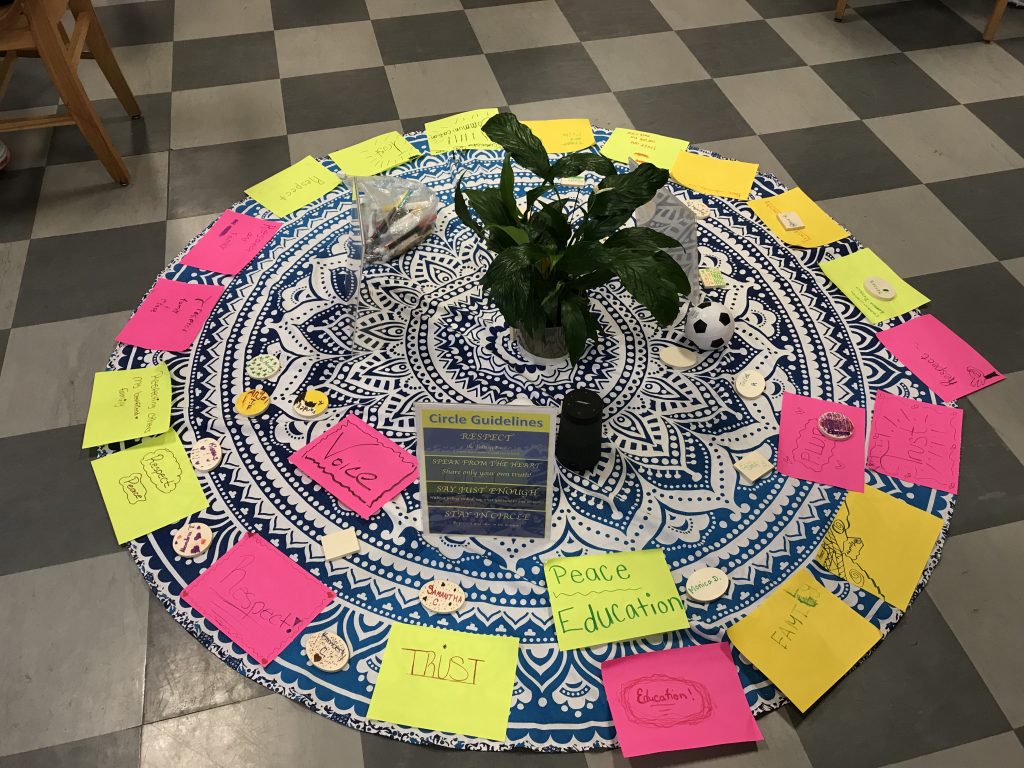What are some first steps in building a Trauma-informed Restorative School?
The first step in building a trauma-informed restorative school is evaluating your starting point. Having a clear picture of where you are will tell you what you need to grow. Your school/district may already have some positive trauma-informed practices that you can build upon and some practices that need to change. Next, consider consolidating committees with overlapping charges. Gather an implementation workgroup/team that can start evaluating and planning the next steps. Training this team in the basics of the work to inform planning is better than training all staff at the start and ensures your rollout is well-planned, well-thought-out, and more impactful.
Joe’s book says we need an implementation team. How big should it be?
It depends on whether you are training one school or an entire district. At the district level, the team should represent key personnel of its leadership. At the school level, the team needs to reflect the make-up of the school. It needs to represent the voices of students, parents, teachers, administration, and support staff. The team should have enough people so that any task, like planning and training, can be assigned without overburdening any person or group. Be sure your team has a few naysayers, so their concerns can be heard, validated, and addressed when necessary.
It sounds like a lot of professional development time. How do we plan all the training?
There is no circumventing the fact that implementation requires learning new skills and practices while unlearning others. It can look like a ton of professional development. A refined, coordinated, and detailed plan spread out over a 3 to 5 years looks a lot less scary. And there are many ways to deliver learning, including book clubs, movie nights, and professional learning communities. Heed the warning that the “train and pray it works” model of implementation rarely results in building trauma-informed restorative schools.
Will Joe come and train our staff?
YES! Joe will come and introduce staff to the basic concepts of trauma-informed schools. For many people, coming to this work happens during short intro trainings. Joe still suggests Training in trauma-informed and restorative practices out of the context of a whole-school change plan can be counter-productive. You want training in this work developed in the context of an effective strategy for long-term culture change. Changing hearts, minds, and classroom practices take time, so training needs to be ongoing over several years. Effective change needs to be supported by policy and procedural changes. You may find that educators become frustrated when they discover the system won’t allow them to use what they learned and do not have the support they need. To make effective, sustainable change, you want all training coordinated by the implementation team. This team plans the time, training, and support the school/district needs. This team also monitors the practices and skills rolled out according to the plan.
We have been doing restorative practices for a few years, how do we add a trauma-informed lens to it?
Contrary to many popular opinions, Restorative Justice/Practice is not inherently trauma-informed by itself. We need to be mindful that a child or adult, who has experienced trauma in their past, is impacted by a circle process in the present. Racism, homophobia, sexism, adultism, and classism are also forms of trauma found in schools. You will need to dismantle systems in place that perpetuate oppression if your school is to be trauma-informed. Educators need a deeper understanding of how traumatic experiences and toxic stress impact the development of children’s bodies and brains. This new approach will require the same elements listed above, a team, a plan, and some dedicated learning and unlearning.
Can we start small, or do we have to go “all in?”
This is a tough question that begs another question, “why bother if you’re not all in?” I cannot think of a reason any school would not want to become a trauma-informed restorative school. Realistically, to do that, it means going all in. That does not mean that you cannot start small. Book clubs, movie nights, and webinars are easy and simple ways to introduce these practices. Another option is to provide teachers with reading material, then follow up with a discussion group during staff meetings. Ultimately, you will need to develop a full plan for implementation with benchmarks, professional development schedules, policy and procedural changes, and accountability.
Do we train the whole staff or just the team?
For starters, unless your school is small (less than 600 students), I would start by training a team. This team creates a 3-year plan. The plan tells you who receives training, when, and what they need to learn. Currently, Joe presents a 6-day training offered in 2-day blocks. There are a few weeks in-between sessions to allow for experimenting with the new learning and unlearning. During the training, the team creates the 3-year plan customized for your school with an eye on change-management. This approach ensures implementation is being done “with” staff rather than being done “to” or “for” them. Your team knows the best ways to make these principles and practices work with your students, families, and community.
